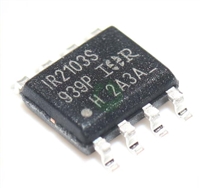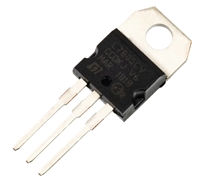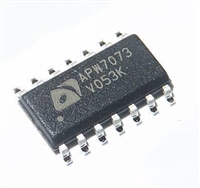M 67025
MATRA MHS
The dual-port RAM has a fast access time, and the two reading it. If the latch has been set the processor assumes
ports are completely independent of each another. This control over the shared resource. If the latch has not been
means that the activity on the left port cannot slow the set, the left processor has established that the right
access time of the right port. The ports are identical in processor had set the latch first, has the token and is using
function to standard CMOS static RAMs and can be read the shared resource. The left processor may then either
from, or written to, at the same time with the only possible repeatedly query the status of the semaphore, or abandon
conflict arising from simultaneous writing to, or a its request for the token and perform another operation
simultaneous READ/WRITE operation on,
a
whilst occasionally attempting to gain control of the
non-semaphore location. Semaphores are protected token through a set and test operation. Once the right side
against such ambiguous situations and may be used by the has relinquished the token the left side will be able to take
system program to prevent conflicts in the control of the shared resource.
non-semaphore segment of the dual-port RAM. The
devices have an automatic power-down feature
by writing a zero to a semaphore latch, and is relinquished
controlled by CS, the dual-port RAM select and SEM, the
again when the same side writes a one to the latch.
The semaphore flags are active low. A token is requested
semaphore enable. The CS and SEM pins control
The eight semaphore flags are located in a separate
on-chip-power-down circuitry that permits the port
memory space from the dual-port RAM in the M 67025.
concerned to go into stand-by mode when not selected.
The address space is accessed by placing a low input on
This conditions is shown in table 1 where CS and SEM
the SEM pin (which acts as a chip select for the
are both high.
semaphore flags) and using the other control pins
Systems best able to exploit the M 67025 are based
around multiple processors or controllers and are
typically very high-speed, software controlled or
software-intensive systems. These systems can benefit
from the performance enhancement offered by the
M 67025 hardware semaphores, which provide a lock-out
mechanism without the need for complex programming.
(address, OE and R/W) as normally used in accessing a
standard static RAM. Each of the flags has a unique
address accessed by either side through address pins
A0-A2. None of the other address pins has any effect
when accessing the semaphores. Only data pin D is used
0
when writing to a semaphore. If a low level is written to
an unused semaphore location, the flag will be set to zero
on that side and to one on the other side (see table 5). The
semaphore can now only be modified by the side showing
the zero. Once a one is writen to this location from the
same side, the flag will be set to one for both sides (unless
a request is pending from the other side) and the
semaphore can then be written to by either side.
Software handshaking between processors offers the
maximum level of system flexibility by permitting shared
resources to be allocated in varying configurations. The
M 67025 does not use its semaphore flags to control any
resources through hardware, thus allowing the system
designer total flexibility in system architecture.
The effect the side writing a zero to a semaphore location
has of locking out the other side is the reason for the use
of semaphore logic in interprocessor communication. (A
thorough discussion of the use of this feature follows
below). A zero written to the semaphore location from the
locked-out side will be stored in the semaphore request
latch for that side until the semaphore is relinquished by
the side having control. When a semaphore flag is read its
An advantage of using semaphores rather than the more
usual methods of hardware arbitration is that neither
processor ever incurs wait states. This can prove to be a
considerable advantage in very high speed systems.
How The Semaphore Flags Work
The semaphore logic is a set of eight latches independent value is distributed to all data bits so that a flag set at one
of the dual-port RAM. These latches can be used to pass reads as one in all data bits and a flag set at zero reads as
a flag or token, from one port to the other to indicate that all zeros. The read value is latched into the output register
a shared resource is in use. The semaphore provide the of one side when its semaphore select (SEM) and output
hardware context for the “Token Passing Allocation” enable (OE) signals go active. This prevents the
method of use assignment. This method uses the state of semaphore changing state in the middle of a read cycle as
a semaphore latch as a token indicating that a shared a result of a write issued by the other side. Because of this
resource is in use. If the left processor needs to use a latch, a repeated read of a semaphore flag in a test loop
resource, it requests the token by setting the latch. The must cause either signal (SEM or OE) to go inactive,
processor then verifies that the latch has been set by otherwise the output will never change.
6
Rev. D (29/09/95)










 深入解读IR2103资料手册:引脚说明、电气参数及替换型号推荐
深入解读IR2103资料手册:引脚说明、电气参数及替换型号推荐

 L7805CV手册解读:引脚说明、替代型号推荐、好坏检测
L7805CV手册解读:引脚说明、替代型号推荐、好坏检测

 MMBT5551资料手册解读:电气参数、替换型号推荐
MMBT5551资料手册解读:电气参数、替换型号推荐

 APW7073资料手册解读:产品特性、引脚说明、替换型号推荐
APW7073资料手册解读:产品特性、引脚说明、替换型号推荐
